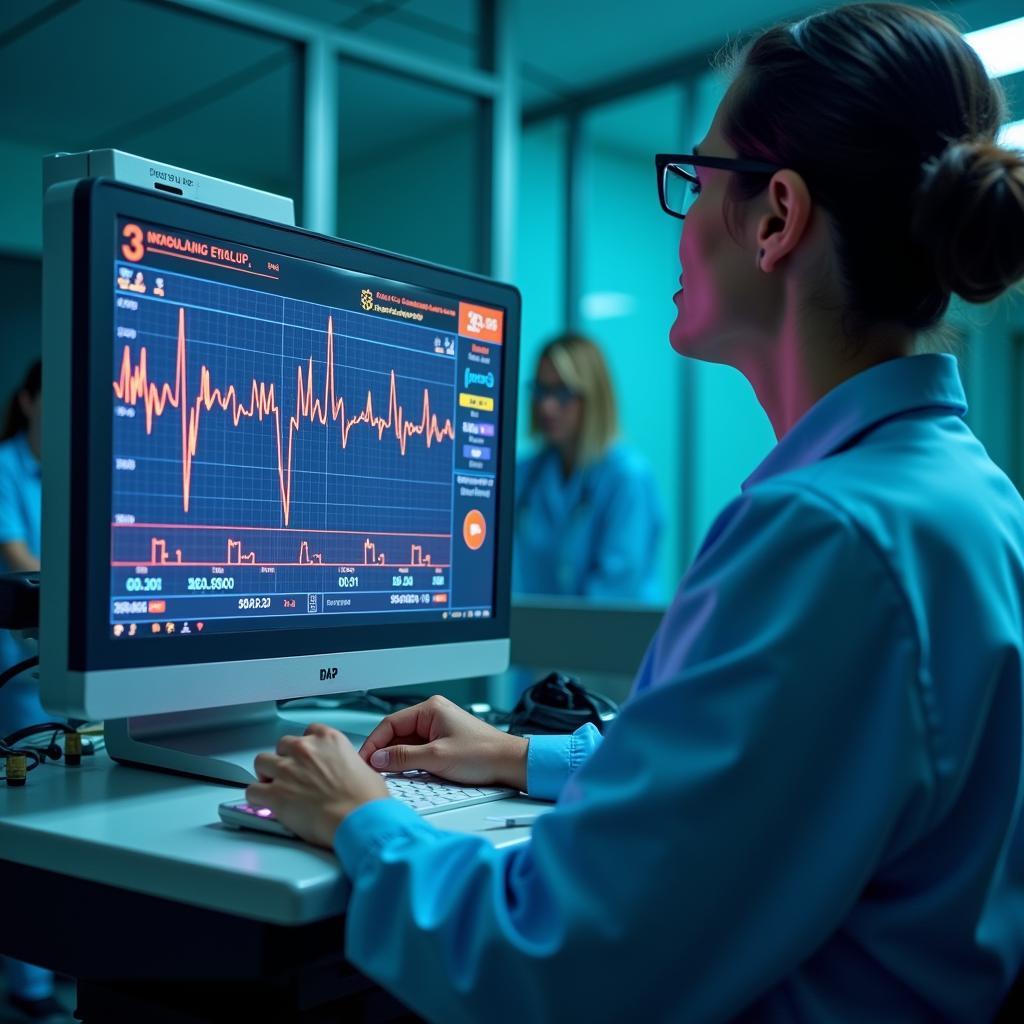Hospital Vitals Machines are indispensable tools in healthcare settings, providing crucial information about a patient’s vital signs. These machines, also known as patient monitors, play a critical role in diagnosis, treatment, and ongoing care. By measuring key physiological parameters such as heart rate, blood pressure, and oxygen saturation, hospital vitals machines empower medical professionals to make informed decisions and ensure optimal patient outcomes.
What are the Key Components of a Hospital Vitals Machine?
Hospital vitals machines are comprised of various components, each serving a specific purpose in measuring and displaying vital signs. These components work together seamlessly to provide a comprehensive overview of a patient’s physiological status.
- Heart Rate Monitor: This component measures the number of times a person’s heart beats per minute (BPM). It typically uses electrodes placed on the patient’s chest, which detect electrical signals produced by the heart.
- Blood Pressure Monitor: Blood pressure readings reflect the force exerted by blood against the walls of arteries. Hospital vitals machines employ an inflatable cuff placed around the patient’s upper arm to measure both systolic and diastolic blood pressure.
- Pulse Oximeter: This component determines the oxygen saturation level in a patient’s blood. It uses a sensor, usually clipped onto a fingertip or earlobe, to measure the amount of light absorbed by oxygenated and deoxygenated blood.
- Temperature Probe: Measuring body temperature is essential for detecting fever or hypothermia. Hospital vitals machines utilize various types of temperature probes, such as oral, rectal, or axillary probes, to obtain accurate readings.
Different Types of Hospital Vitals Machines
Depending on the specific needs of a healthcare facility and the complexity of patient care, different types of hospital vitals machines are available. Each type offers varying levels of functionality, portability, and features.
- Bedside Monitors: Commonly found in hospital rooms and intensive care units, these machines are designed for continuous monitoring of critically ill patients. They typically have large, easy-to-read displays and advanced alarm systems to alert healthcare providers of any significant changes in a patient’s condition.
- Portable Monitors: As the name suggests, these machines are compact and lightweight, allowing for easy transport between different care areas. They are commonly used for spot checks or during patient transport.
- Ambulatory Monitors: These devices allow patients to continue monitoring their vital signs at home or on the go. They are particularly useful for individuals with chronic conditions who require ongoing monitoring.
 Types of Hospital Vitals Machines
Types of Hospital Vitals Machines
Importance of Accurate Vitals Monitoring in Healthcare
Accurate and timely monitoring of vital signs is paramount in healthcare settings for a multitude of reasons. By closely tracking these indicators of bodily functions, medical professionals can:
- Detect Early Warning Signs: Changes in vital signs can often be the first indication of a deteriorating health condition. Early detection allows for prompt intervention and can significantly improve patient outcomes.
- Assess Treatment Effectiveness: Monitoring vital signs helps evaluate the effectiveness of medical interventions and make necessary adjustments to treatment plans.
- Prevent Complications: Continuous monitoring of vital signs can help identify potential complications before they escalate, allowing for proactive measures to be taken.
 Importance of Vitals Monitoring
Importance of Vitals Monitoring
Conclusion
Hospital vitals machines are indispensable tools in modern healthcare, providing essential information about a patient’s physiological well-being. From bedside monitors to portable and ambulatory devices, these machines play a crucial role in diagnosis, treatment, and ongoing care. By enabling accurate and timely monitoring of vital signs, hospital vitals machines empower medical professionals to make informed decisions, ensure optimal patient outcomes, and ultimately save lives.